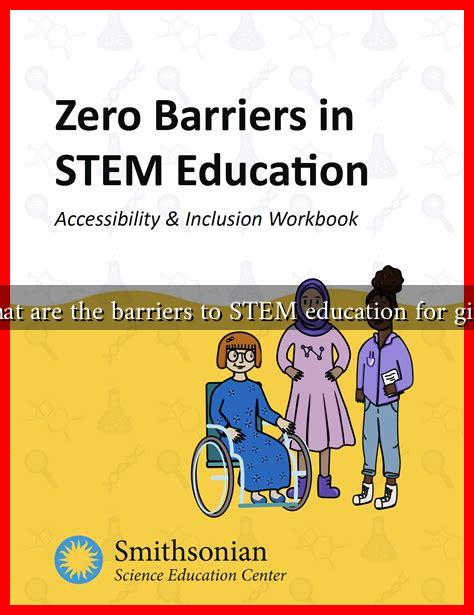-
Table of Contents
What are the Barriers to STEM Education for Girls?
Science, Technology, Engineering, and Mathematics (STEM) fields are critical for driving innovation and economic growth. However, girls and women remain significantly underrepresented in these areas. Despite progress in recent years, various barriers continue to hinder girls’ participation in STEM education. This article explores these barriers, providing insights into their implications and potential solutions.
Societal and Cultural Norms
One of the most significant barriers to girls pursuing STEM education is the societal and cultural norms that dictate gender roles. Many cultures still perpetuate the stereotype that boys are naturally better at math and science than girls. This belief can discourage girls from engaging in STEM subjects from a young age.
- Stereotypes: Research shows that girls often internalize negative stereotypes about their abilities in STEM. A study by the American Association of University Women found that girls as young as six years old begin to believe that boys are better at math.
- Parental Influence: Parents play a crucial role in shaping their children’s interests. If parents unconsciously encourage boys to pursue STEM while steering girls towards the humanities, it can create a significant disparity.
- Media Representation: The lack of female role models in STEM fields in media can further perpetuate the idea that STEM is a male domain. When girls do not see themselves represented, they may feel less inclined to pursue these subjects.
Educational Environment
The educational environment can also pose challenges for girls interested in STEM. From classroom dynamics to teacher biases, several factors can impact girls’ experiences in STEM education.
- Teacher Bias: Studies have shown that teachers may unconsciously favor boys in STEM classes, providing them with more encouragement and attention. This bias can lead to girls feeling less confident in their abilities.
- Classroom Dynamics: In co-ed classrooms, boys often dominate discussions and group work, which can marginalize girls’ contributions. This dynamic can discourage girls from participating actively.
- Lack of Supportive Programs: Many schools lack programs specifically designed to encourage girls in STEM. Initiatives like coding clubs or science fairs often do not actively promote female participation.
Access to Resources
Access to resources is another critical barrier. Girls may not have the same opportunities as boys to engage with STEM-related activities outside of school.
- Extracurricular Activities: Many STEM-related extracurricular activities, such as robotics clubs or science camps, may not be equally accessible to girls. This lack of access can limit their exposure and interest in these fields.
- Financial Constraints: Economic barriers can also play a role. Families with limited financial resources may prioritize other educational opportunities over STEM-related activities, further widening the gap.
- Geographic Disparities: In rural or underserved areas, access to quality STEM education and resources can be severely limited, disproportionately affecting girls who may already face additional challenges.
Case Studies and Statistics
Several studies highlight the impact of these barriers on girls’ participation in STEM. For instance, a report by UNESCO indicates that only 30% of the world’s researchers are women, and this disparity begins in education. In the United States, girls earn about 50% of the high school diplomas but only represent 18% of computer science degrees awarded.
Programs like Girls Who Code have emerged to address these issues by providing girls with the resources and support they need to thrive in STEM. Such initiatives have shown promising results, increasing girls’ interest and confidence in technology-related fields.
Conclusion
The barriers to STEM education for girls are multifaceted, encompassing societal norms, educational environments, and access to resources. Addressing these challenges requires a concerted effort from parents, educators, and policymakers. By fostering an inclusive environment that encourages girls to explore STEM, we can help bridge the gender gap and empower the next generation of female scientists, engineers, and innovators. The future of STEM depends on the diverse perspectives and talents of all individuals, regardless of gender.

